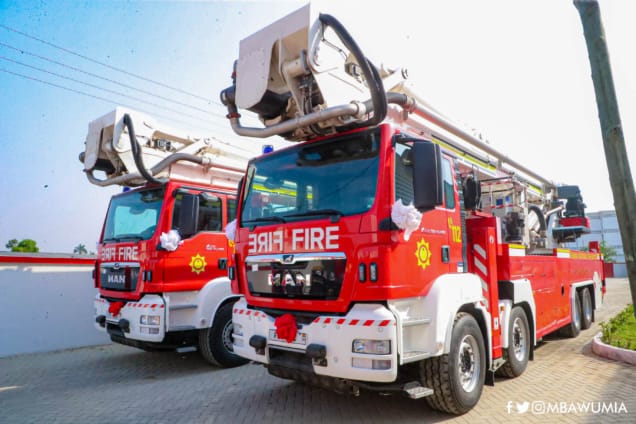Ghana is facing a critical firefighting capability crisis, with a significant number of fire tenders either dysfunctional or out of commission.
The situation is particularly dire in some northern part of Ghana, where all of the available fire trucks are either faulty or out of use. These alarming details were revealed in a response from the Ghana National Fire Service (GNFS) to a Right to Information request submitted by JoyNews.
The GNFS’s responsibilities extend beyond firefighting to include road accident rescues, saving drowning victims, rescuing those trapped in collapsed buildings, flood rescue operations, and even dealing with bee attacks.
These are life-or-death situations where response time is crucial. Despite the Fire Service’s claims of being well-prepared to combat undesired fires, the data on its firefighting equipment reveals significant challenges in fulfilling its duties effectively.
In a country of over 30.8 million people, only 248 fire engines are available. Alarmingly, 133 of these engines are either faulty or out of commission, representing 53.6 percent. Common issues include engine malfunctions, brake faults, control board problems, and electrical faults.

The crisis is most severe in certain regions. Both the Upper East and Oti regions face a 100 percent appliance failure rate. In the Volta Region, 15 out of 17 appliances are down. The Upper West Region has 14 fire tenders, 12 of which are not operational.
In Greater Accra, around 60 percent of fire engines are either faulty or out of use. Critical areas such as Adenta, Abelemkpe, Trade Fair, and Tema township are left with only one operational truck, which may also be in poor condition. Even the National Headquarters is not spared, with six out of its eight engines faulty.

At Korle Bu, there is not a single operational truck. In Weija, the only fire appliance has broken down due to an engine fault. Investigations revealed that this appliance was in such poor shape that it caught fire while on its way to respond to a fire outbreak in Kasoa a few months back, never reaching the scene.
In the Ashanti Region, 25 percent of the 24 fire trucks are either faulty or out of commission. Kumasi Metro, Kumasi Regional HQ, Manhyia, and New Edubiase all have trucks with faulty engines.

As a result, the Fire Service struggles to respond to emergencies promptly, often arriving too late, with lives and property already destroyed by the time they reach the scene.
This problem is exacerbated by non-functioning fire hydrants in many parts of the country. Consequently, less than 5,000 firefighters are currently operational despite there being more than 15,000 trained firefighters.

This crisis in Ghana’s firefighting capability underscores the urgent need for investment in equipment and infrastructure to ensure the safety and well-being of its citizens.
The Fire Service’s ability to respond effectively to emergencies is critical, and immediate action is required to address these deficiencies.






